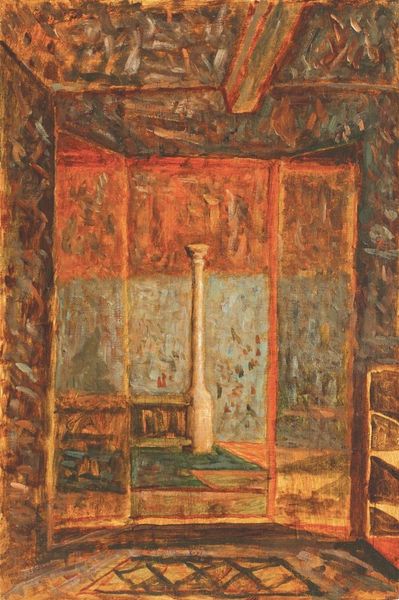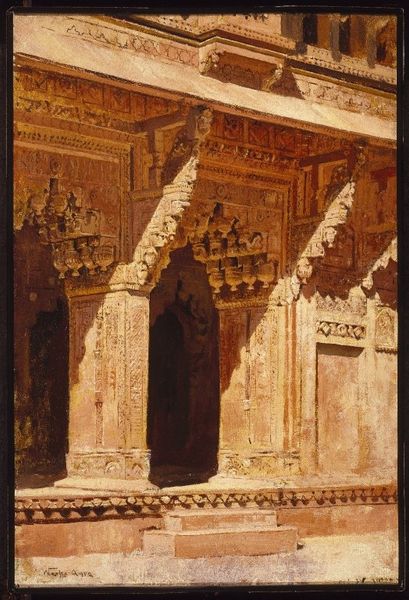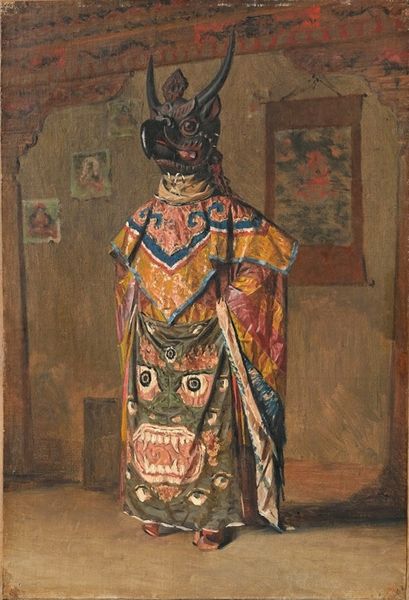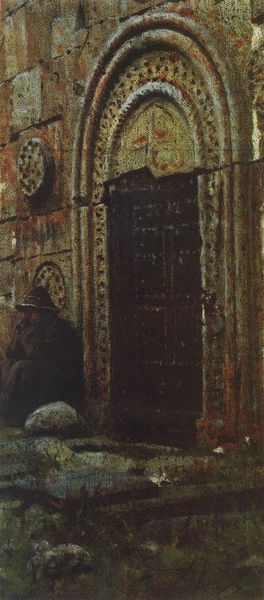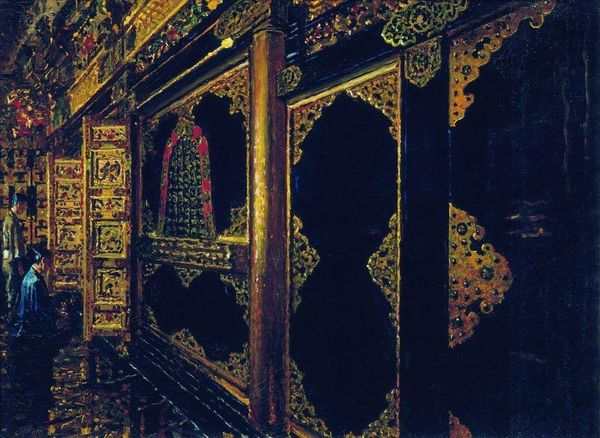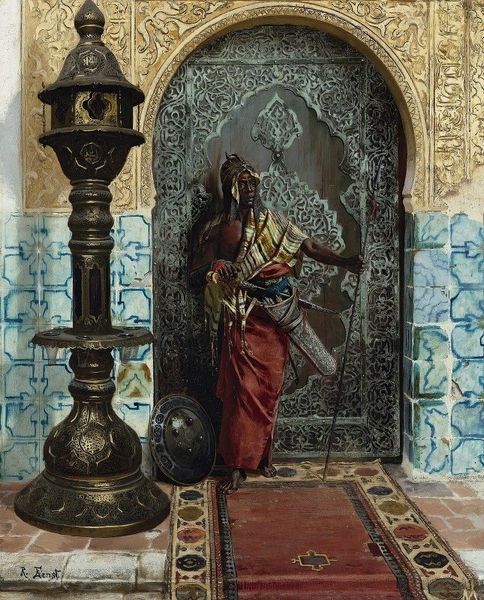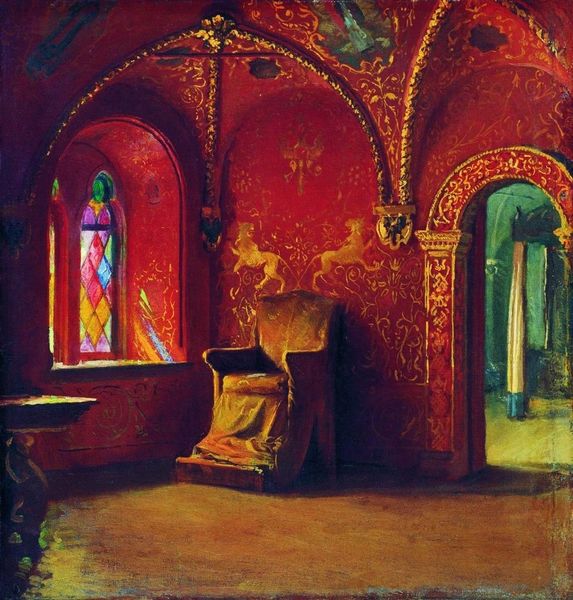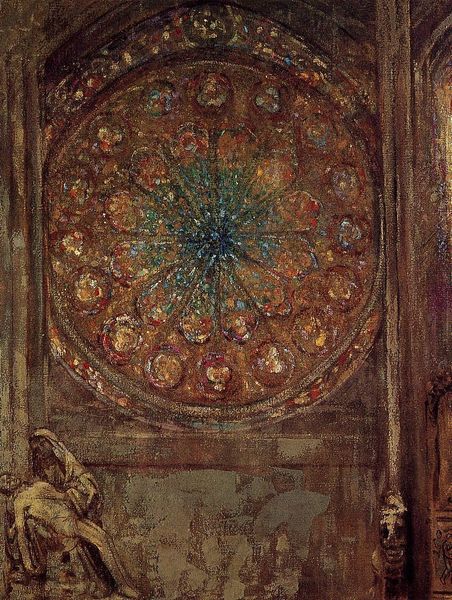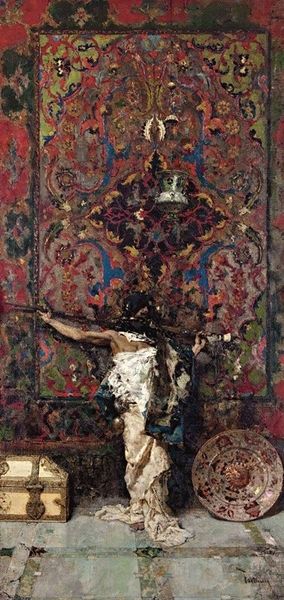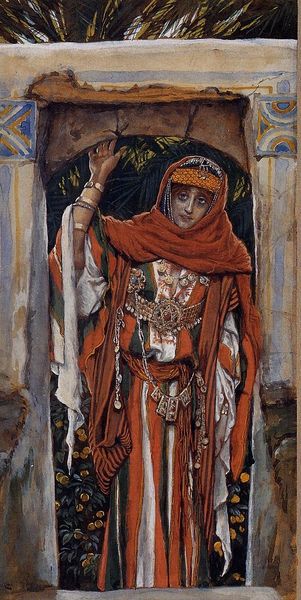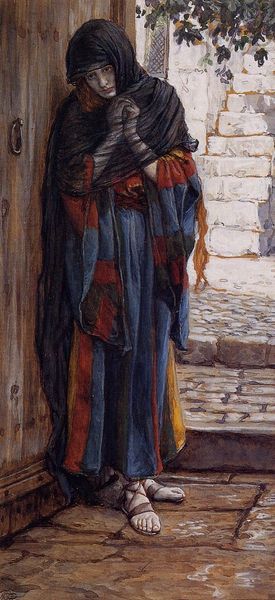
oil-paint
#
oil-paint
#
asian-art
#
landscape
#
oil painting
#
realism
Copyright: Public domain
Curator: This is Vasily Vereshchagin’s "Buddhist Prayer Machine," painted around 1875. Vereshchagin, a Russian artist, was known for his realist style and his focus on scenes from military life and travels in Asia. Editor: The atmosphere is almost hushed, isn’t it? That solitary figure bathed in the light by the prayer wheel gives me a sense of quiet contemplation, though there are faded figures sketched on the wall, seeming to echo past events. Curator: Indeed, and this oil painting offers a glimpse into the cultural and religious practices in the regions he explored. These prayer wheels, common in Tibetan Buddhism, contain written mantras. Spinning the wheel is akin to reciting the prayers. What draws me is Vereshchagin’s positioning. He places the devotee humbly to the side as though he is less important than the process of devotional practice, which takes center stage. Editor: Absolutely. The prayer wheel is so visually vibrant with geometric design and different registers of symbolic iconography and script, it appears as a portal for some, both divine and introspective, while the rest of the architecture of the prayer station decays. What’s most compelling is the use of the Wheel, like rosary beads in other religions, to harness one’s intention into prayer. Curator: I agree. The painting is valuable for its insight into how Western artists perceived and represented Eastern religious practices in the late 19th century. Consider how ethnographic painting served an increasingly curious public in an era of growing empire, but note as well that paintings such as these helped Western audiences interpret Eastern philosophies that they were encountering during their travels. Editor: There's something eternal in the practice captured, a continuous thread of devotion represented by the perpetual turning. The ephemeral meets the absolute. It speaks to something deeply embedded in the human psyche, the desire for transcendence. Curator: Yes, Vereshchagin captured not just an image, but an ongoing process of belief and ritual. It’s fascinating to observe how this work navigated cultural understanding in the 19th century and still stimulates us now. Editor: Seeing the layering of spiritual history, and how humans continue their cultural and spiritual practice throughout changing political climates helps re-center the conversation around cultural traditions and continuities.
Comments
No comments
Be the first to comment and join the conversation on the ultimate creative platform.

